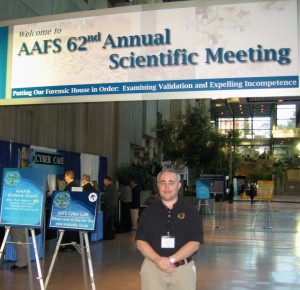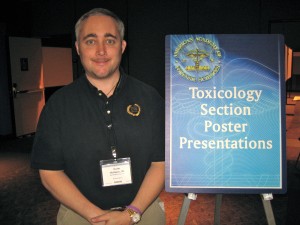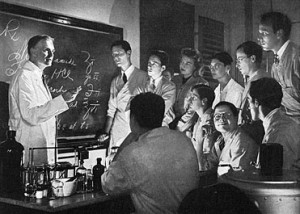The criminal defense attorney is truly not the enemy of forensic science, the prosecution is. That is a pretty bold statement, but it is true. The way that prosecutor’s present forensic science in the Courtroom is the biggest hindrance to the truth.
I took the time to go out and attend the 62nd annual conference of the American Academy of Forensic Science (AAFS).

I have to tell you that I was impressed overall by the openness of the forensic scientists and Medical Examiners that I met. I had many a discussion with them especially the younger ones presenting their posters (I found that the poster presentation was a fantastic opportunity and am most glad I went to it). To a person they were the opposite of the type of folks that I had met in the adversarial setting in the Courtroom. I found and identified areas of common ground and consensus. I discovered that they too were concerned about the honest presentation of science and truth in the courtroom, just like ideal little old me.
I had met an analytical chemist who taught forensics at a college on the plane flight. The long 5+ hour flight yielded a great amount of time to discuss a variety of things.
We were both relatively young. (31 and my 33) As we sat and chatted, we tried to answer the following question: “If we had a magical wand, but it was a reasonable one, what would we each wish to come true to improve the scientifically honest presentation of forensic results in a Courtroom?”


This is the very rough product of what we concluded would be the result of that magical wand and our consensus. We first stated definitely that these precepts applied to both sides whenever they called a witness to the stand
- There needs to be wide-scale true scientific validation of the underlying method that the testifying witness must be able to present and explain to the trier of fact(e.g., why this step is completed in this order; why this is done and not that).
- Allowing access to the raw data generated on any test and the methodologies employed upon demand for scientific review.
- Testifying experts must immediately admit and fully disclose their bias. They must also address what, if any remedial measures, they took to control this bias. This remediation must be effective and meaningful and not superficial.
- Testifying witnesses must recognize both the existence and the scope of their limitations in terms of their expertise and not testify beyond it. (e.g., a trained operator of a machine versus a true credentialed Scientist; who trained you? How do you know what you know?)
- The removal of loaded language from the vocabulary of the courtroom and ceasing the overstatement of a position. (e.g., “Match”; “Identical”)
- As a testifying witness, you must go beyond the standard minimum in your professional development. Train. Read. Do not overstate in your CV.
- Stand for external proficiency
- Uncertainty must be reported in a metrologically responsible way.
- The recognition that the importance of any court case cannot be measured by the verdict as it is often incongruous to it. If an error is discovered during direct or cross examination that you recognize, be a scientist announce it. Even if there is a guilty verdict, then be a responsible scientist don’t shrug your shoulders and continue to do wrong.



Dallas DWI Attorney says:
Being that we already seem to be sharing factors regarding The prosecution is the enemy of good science | The Truth About Forensic Science, The law does not just operate in criminal spheres, nor is it confined to merely constitutional matters and the distribution of power.
Christine Kazarian says:
people are funny like that